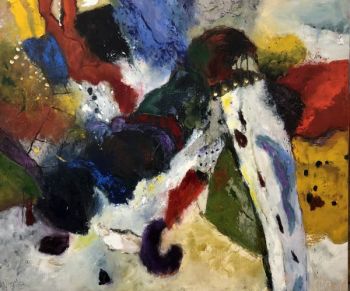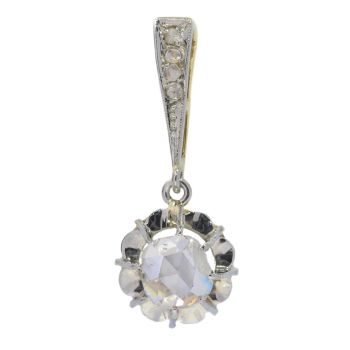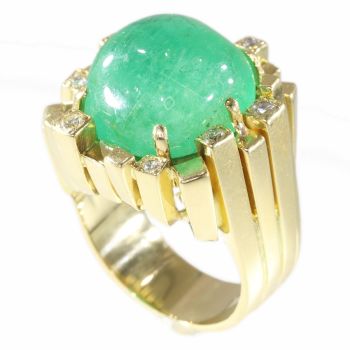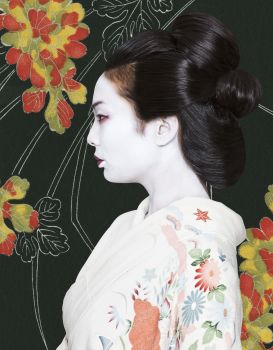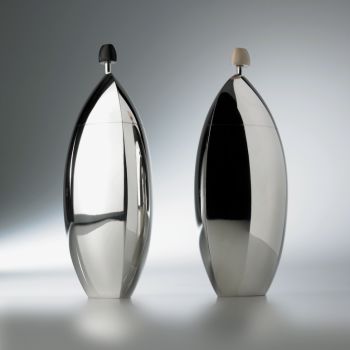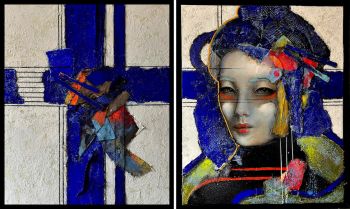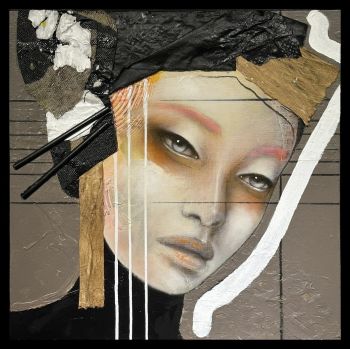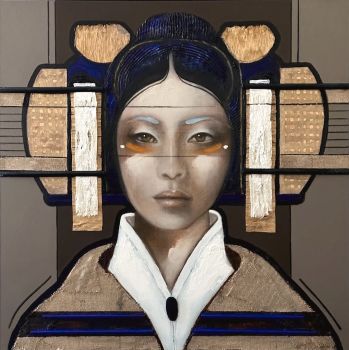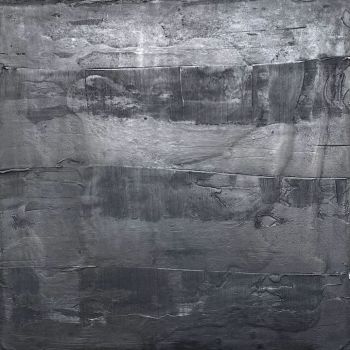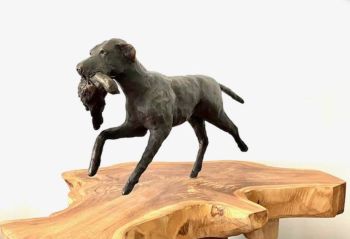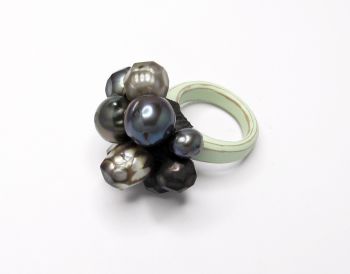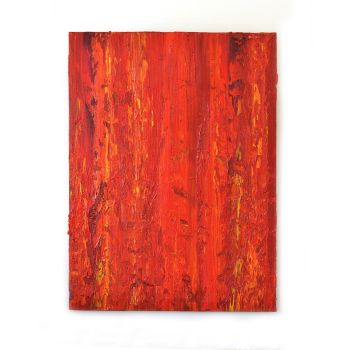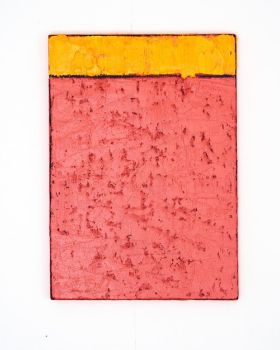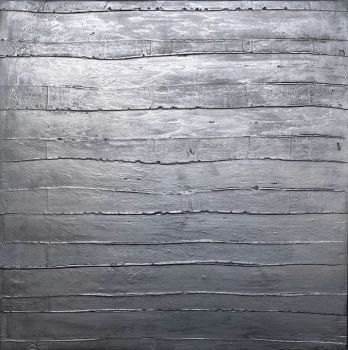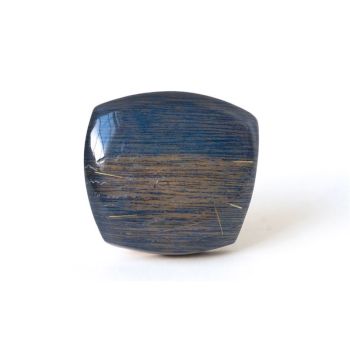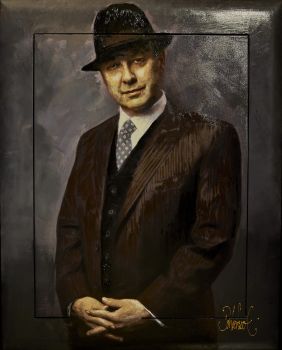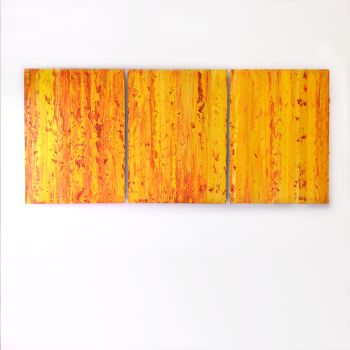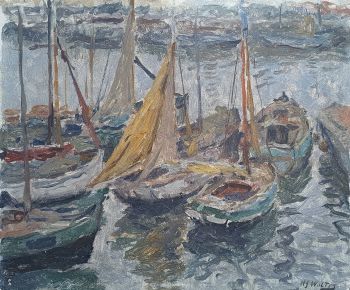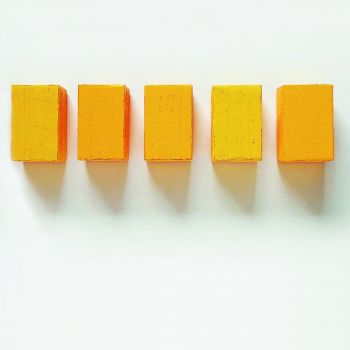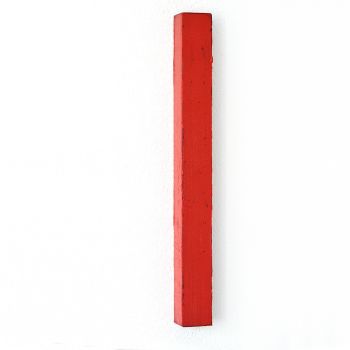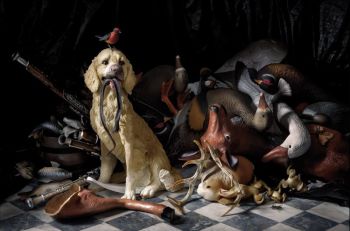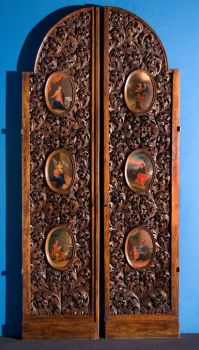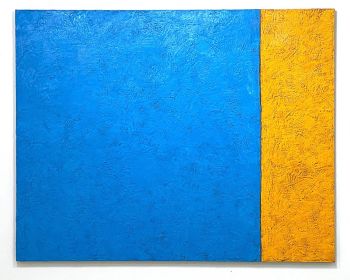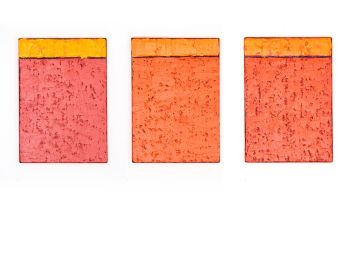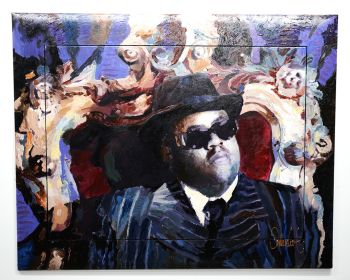UN BOIS JAPONAIS `` EDICT BOARD '', KOSATSU 1685
Artiste Inconnu
Bois
Prix sur demande
Zebregs & Röell - Fine Art - Antiques
- Sur l'oeuvre d'artOf rectangular shape with a shallow-pitched roof, the wood left bare but for a long inscription in ink prohibiting the practice of Christianity and announcing rewards for the capture of Christians of various stature, with a signature for the Governor, Bugyo, and dated Jokyo ninen juichigatsu (November 1685).
H. 47.3 cm x W. 85.5 cm
Note:
Christianity was banned in Japan in the 1630s, and these edict boards were displayed all over Japan after that. However, few have survived due to centuries of rain and wind damaging the wood.
Christianity first appeared in Japan with the arrival of the Portuguese in 1543 and in particular with the arrival of the Jesuit missionary Franciscus Xaverius in 1549. The Jesuits focused their missionary efforts successfully at the higher strata of society, with Daimyo families in Kyushu such as the Satsuma clan joining the faith, partly to obtain imported goods (such as guns) the Portuguese Jesuits were trading in. However the Shogunate, military rulers of Japan, increasingly distrusted the Christian community and after the Shimabara rebellion of 1637-38 during which Christian peasants rebelled against the Shogunate, Shogun Tokugawa fully banned Christianity in Japan.
Other factors led to the ban, such as fear that the missionaries were paving the way for a foreign occupation of Japan and that the converts were spies for foreign powers. The proclamation of 1639 altogether outlawed the promulgation of and adherence to the Christian religion. It also marked the beginning of a long period of anti-Christian persecutions that lasted for two and a half centuries. Signboards such as the present one were set up all over the country, encouraging people to report Christians to the authorities for various financial rewards (500 pieces of silver for a priest and 100 for an ordinary convert). Being found out as a Christian involved the death penalty, sometimes by crucifixion, and symbols and objects used for Christian worship were destroyed or desecrated. Still after the Meiji restoration and the re-establishment of religious freedom after 1867, more than 30.000 “hidden Christians” came out of hiding.
Another “Edict board” relating to the prohibition of Christianity in Japan and dated 1682, is in the collection of the British Museum (acc.n.1895,0721.1). - Sur l'artiste
Il peut arriver qu'un artiste ou un créateur soit inconnu.
Certaines œuvres ne doivent pas être déterminées par qui elles sont faites ou elles sont faites par (un groupe d') artisans. Les exemples sont des statues de l'Antiquité, des meubles, des miroirs ou des signatures qui ne sont pas claires ou lisibles, mais aussi certaines œuvres ne sont pas signées du tout.
Vous pouvez également trouver la description suivante :
•"Attribué à …." A leur avis probablement une oeuvre de l'artiste, au moins en partie
•« Atelier de …. ou « Atelier de » À leur avis, une œuvre exécutée dans l'atelier ou l'atelier de l'artiste, éventuellement sous sa direction
•« Cercle de… ». A leur avis une oeuvre de la période de l'artiste témoignant de son influence, étroitement associée à l'artiste mais pas forcément son élève
•« Style de … ». ou "Suiveur de ...." Selon eux, une œuvre exécutée dans le style de l'artiste mais pas nécessairement par un élève ; peut être contemporain ou presque contemporain
•« Manière de… ». A leur avis une oeuvre dans le style de l'artiste mais d'une date plus tardive
•"Après …." A leur avis une copie (quelle qu'en soit la date) d'une oeuvre de l'artiste
•« Signé… », « Daté… ». ou « Inscrit » À leur avis, l'œuvre a été signée/datée/inscrite par l'artiste. L'ajout d'un point d'interrogation indique un élément de doute
• "Avec signature ….", "Avec date ….", "Avec inscription …." ou "Porte signature/date/inscription" à leur avis la signature/date/inscription a été ajoutée par quelqu'un d'autre que l'artiste
Êtes-vous intéressé par l'achat de cette oeuvre?
Artwork details
Related artworks
- 1 - 4 / 12
Artiste Inconnu
UN FILET D'IVOIRE D'UN DUTCHMAN TENANT UN COCKEREL18th century
Prix sur demandeZebregs & Röell - Fine Art - Antiques
Artiste Inconnu
UN RARE GRAND TÉLESCOPE EN CUIR LAQUÉ JAPONAIS1750 - 1800
Prix sur demandeZebregs & Röell - Fine Art - Antiques
Artiste Inconnu
The Stamford Raffles Secretaires.1800 - 1813
Prix sur demandeZebregs & Röell - Fine Art - Antiques
Artiste Inconnu
A rare Japanese export lacquer medical instrument box1650 - 1700
Prix sur demandeZebregs & Röell - Fine Art - Antiques
1 - 4 / 19Artiste Inconnu
The Stamford Raffles Secretaires.1800 - 1813
Prix sur demandeZebregs & Röell - Fine Art - Antiques
Artiste Inconnu
UN FILET D'IVOIRE D'UN DUTCHMAN TENANT UN COCKEREL18th century
Prix sur demandeZebregs & Röell - Fine Art - Antiques
Artiste Inconnu
UNE COLLECTION DE QUATRE BOÎTES À BIBLE EN IVOIRE SRI LANKAN18th century
Prix sur demandeZebregs & Röell - Fine Art - Antiques
Artiste Inconnu
UN MODÈLE JAPONAIS D'UN NORIMONO, UN PALANQUIN1650 - 1700
Prix sur demandeZebregs & Röell - Fine Art - Antiques
Artiste Inconnu
UN RARE GRAND TÉLESCOPE EN CUIR LAQUÉ JAPONAIS1750 - 1800
Prix sur demandeZebregs & Röell - Fine Art - Antiques
1 - 4 / 24Artiste Inconnu
UN RARE GRAND TÉLESCOPE EN CUIR LAQUÉ JAPONAIS1750 - 1800
Prix sur demandeZebregs & Röell - Fine Art - Antiques
Artiste Inconnu
A large Japanese Imari porcelain 'VOC Groningen' dish1800 - 1925
Prix sur demandeZebregs & Röell - Fine Art - Antiques
Engelbert Kaempfer
LIVRE ENGELBERT KAEMPFER1651 - 1716
Prix sur demandeZebregs & Röell - Fine Art - Antiques
1 - 4 / 24Artiste Inconnu
Icône russe représentant une Deesis étendue1600 - 1650
Prix sur demandeKunsthandel H.W.C. Dullaert Icons
1 - 4 / 24Artiste Inconnu
GRANDE PEINTURE INDIENNE IMPORTANTE ET RARE `` STYLE D'ENTREPRISE '' SUR IVOIRE REPRÉSENTANT UN DÉFI1850 - 1900
Prix sur demandeZebregs & Röell - Fine Art - Antiques
 Sélectionné par
Sélectionné parDanny Bree
Artiste Inconnu
Japanese transition-style lacquer coffer 1640 - 1650
Prix sur demandeZebregs & Röell - Fine Art - Antiques
Artiste Inconnu
A silver spoon commemorating Juff’ Margareta van Hoorn1656 - 1694
Prix sur demandeZebregs & Röell - Fine Art - Antiques
1 - 4 / 12


